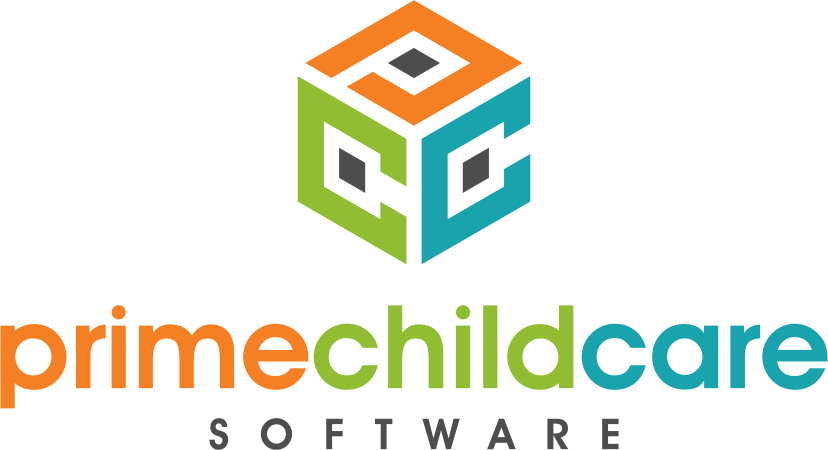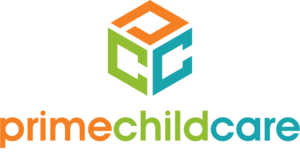Who Says You Have To Color Inside The Lines?
Gone (and good riddance) are the days of desks aligned in rows and teaching to an answer. Gone are the days of ignoring the process or inventiveness of how someone arrived at an answer. That type of learning is going by the wayside (thank goodness), and we are forging ahead with imaginative play and problem solving activities while nurturing creativity!
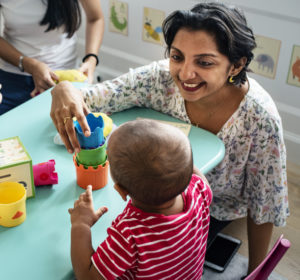
With typically more than one correct way to arrive at most answers, today, more than ever before, we are embracing the process and creative thinking as much as we are the correct answer. Some educators are even intentionally teaching kids to be creative thinkers, and realistically, to be competitive moving forward, this is a skill we would be remiss not to teach.
While some educators may not see creative thinking as a pure skill, Miriam Clifford touts in her article “30 Ideas to Promote Creativity in Learning” that creativity is “less a trait and more a proficiency that can be taught.” If you are thinking that you’re not creative and this is not a skill you’ll easily pick up, don’t be fooled. We all have the potential to be creative.
So, let’s be part of this paradigm shift in not only how we teach but also in how we ourselves think. If you’re feeling anxious about stepping out of your comfort zone, Janelle Cox of the TeachHub.com says that knowing the simple habits of other creative teachers can help you get there, including:
- Taking Risks
- Being Open-Minded
- Using Resources Around You to Help Create New, Innovative Ideas
- Talking to Other Teachers to Get Feedback on New Ideas
- Embracing New Teaching & Learning Styles
So, while you’re working on your own creative skills and stretching yourself professionally, there are a few quick tips and tricks you can do in your classroom to inspire creativity:
Create A Fun Space
Remember the rows of desks & tables I mentioned above? Make your room anything but that! Provide lots of learning stations around the perimeter of the room. Be sure to include bright colors and comfortable/flexible seating. When a space is inviting, we tend to linger and engage more. So, think of what you would want to see in these centers.
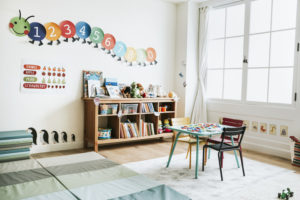
Turn your “desks” into collaborative learning stations. When kids sit at a table and are able to learn and work
collaboratively, they feed and build off of each other’s ideas. Can that go awry? Of course it can, but not if you are there guiding and nudging them through productive creative play.
Ultimately, you want to be able to keep your classroom flexible so that you can rearrange easily and often to keep everyone’s creative brains engaged. You will likely also be creatively inspired as you see their minds at work and identify new areas of study and opportunities for growth.
Keep It Hands On
Some of the best creative learning is done by hand. “The best way to engage kids’ brains is by having them move their hands,” according to Samantha Cleaver’s article “Hand-On Is Minds-On.” Many kids are hands-on (tactile) learners. Kids who are creatively and actively molding, moving and making with their hands while even listening to a lesson fare better cognitively than those who are exposed to concepts solely by traditional methods. 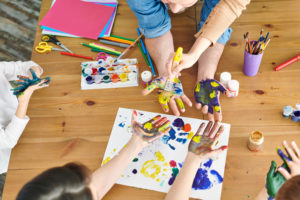
The Institute for Educational Advancement’s blog “Hands-On Learning and Memory” cites a PBS article that states the “more avenues there are to receive data through the senses, the more connections the brain can make. The more connections that are made, the better a learner can understand a new idea. This holds not only for primary age learners, but through adulthood.” So, when we add the element of touch to our lessons, we are creating an additional sense to the traditional learning styles.
Our kids are no longer purely auditory learners. Most of them are some combination of auditory, visual and tactile. So, appealing to these common senses to keep them engaged, intrigued, and (even sometimes) entertained, really drives home the skill you are teaching and helps to lock it away in that longer-term memory.
In addition to the memory benefits, hands-on learning also promotes creativity by allowing teachers to more easily observe student progress around certain concepts or skills and thus fill in the gaps as needed during the process versus as a re-teaching activity.
Praise The Process
As students engage in creative learning through inquiries, problem solving, discovery, hands-on activities, or whatever you have designed to foster their creative side, consider the growth and adoption of this type of learning. Praise that process. Recognize students who are thinking of various ways to solve the same problem through verbal praise, a creative thinker bulletin board in which you can highlight various students week to week, a special necklace or cap that celebrates their creative mind in the classroom. Doing this type of extrinsic motivation will hopefully encourage them to thinking critically and creatively more often.
Praise that process. Recognize students who are thinking of various ways to solve the same problem through verbal praise, a creative thinker bulletin board in which you can highlight various students week to week, a special necklace or cap that celebrates their creative mind in the classroom. Doing this type of extrinsic motivation will hopefully encourage them to thinking critically and creatively more often.
Recognizing that it isn’t just those who color inside the lines that make our world go ‘round is important. You are teaching the designers, creators, developers, builders, discoverers of tomorrow. You are also giving them to the tools to think critically and problem solve. It’s a big task. Nurturing creativity as a part of that not only make it fun but makes it a game changer in your classroom!
Recent Articles from Prime:

How To Fire Up Your Childcare Center Staff
Igniting excitement and community in your school for the next semester — FIRE UP YOUR STAFF!! Whether you are a student or a teacher, there is something about the beginning of the term or school year that is special. The
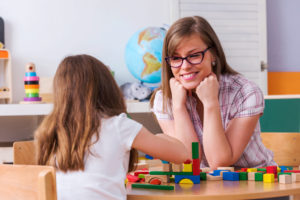
Meeting Quality Standards With Optimum Classroom Ratios
Parents prize quality when looking for a childcare program. Get the right info about optimum classroom ratios to meet quality standards. … Read More

Building A Constructive Parent Feedback Program For Your Childcare Center
Survey Says: Constructive ways to Collect, Evaluate, and Implement Change Based on Parent Feedback. Do you consider the parents of your preschool, day care center, or after school program to be enemies or allies? Have you ever even thought about

An Owner’s Guide to Opening a New Daycare Location
Opening a new daycare location can be a seamless process when you use the right childcare management software. … Read More
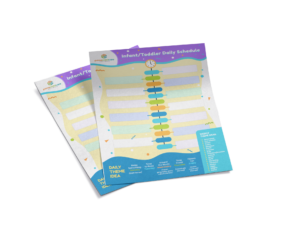
Free Templates – Printable Daily Schedules for Infant-Toddler-Preschool Rooms
[dflip id=”88422″][/dflip]

3 Lies About Daycare Teacher Evaluations
No one cheers when you announce there will be a staff evaluation soon. Read more for a few tips and tricks if you want to make the process go smoother! … Read More

